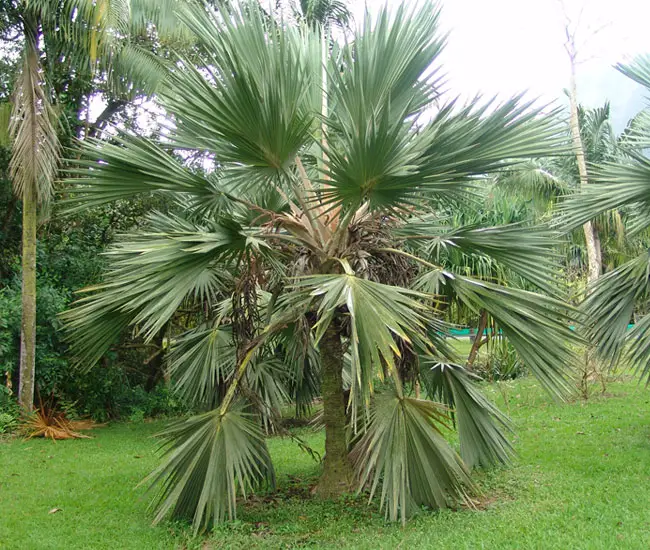
The Blue Latan Palm Tree, scientifically designated as Latania loddigesii, is a striking flowering palm that originates from Mauritius Island. This palm shares notable similarities with the Red Latan Palm and the Bismarck Palm and can also thrive when grown indoors.
Quick Facts:
| Scientific name: | Latania loddigesii |
| Common names: | Blue Latan, Blue Latania Palm. |
| Origin: | Native to to Mauritius Island. |
| Growth Rate: | Slow. Up to 20 – 30 ft tall and 15 – 20 ft wide. |
| Cold Tolerance: | USDA Zones 10b (35 – 40 F) to 11 (above 40 F) |
| Light Req: | Full sun. Can tolerate partial shade. |
| Water Req: | Moderate. |
| Soil Req: | Widely adaptable. |
| Fruit: | Brownish-green. Not edible. |
| Propagation: | Seeds (which must be fresh), germinating in 1-2 months |
Identifying Characteristics of the Blue Latan Palm
This palm boasts a single gray trunk, slightly swollen at the base, with a diameter of approximately 10 inches, adorned with well-defined old leaf scars. Its leaves are notably large, measuring about 10 to 12 feet in length, and are characterized by a striking blue-green coloration.
These palmate, or fan-shaped, leaves are well-supported by substantial, armed stems, each measuring 4 to 5 feet in length. The Blue Latan Palm can achieve a majestic height of 20 to 30 feet and a width spanning 15 to 20 feet.
Flowers and Fruits of the Blue Latan Palm
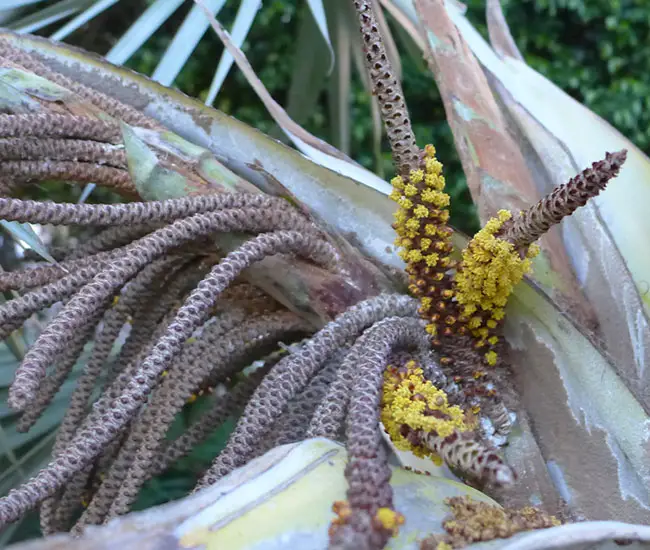
During its growth, the Blue Latan Palm produces small, yellow flowers on branched inflorescences. Notably, male and female flowers emerge on separate plants.
Following the flowering stage, the palm yields oblong, greenish-brown fruits, approximately 2 inches in length and 1 inch in width. These fruits, resembling leaches or apricots, encase a woody “pit” containing a single seed.
Caring for the Blue Latan Palm
Once established, the Blue Latan Palm is low-maintenance. It exhibits tolerance to cold temperatures down to 35°F, making it suitable for regions within USDA Zones 10b (with temperatures ranging from 35 to 40°F) to 11 (above 40°F).
This palm prefers full sun but can also tolerate partial shade. Despite its striking appearance, it is remarkably drought-tolerant, requiring only a moderate amount of watering.
To ensure optimal nutrition and prevent deficiencies, it’s advisable to apply a high-quality palm fertilizer with a continuous-release formula twice a year during the growing season.
It’s worth noting that the Blue Latan Palm may be susceptible to lethal yellowing and occasionally faces issues with palmetto weevils. These considerations aside, this palm stands as an excellent choice for those seeking an attractive and relatively hassle-free addition to their landscape.
Blue Latan Palm Pictures
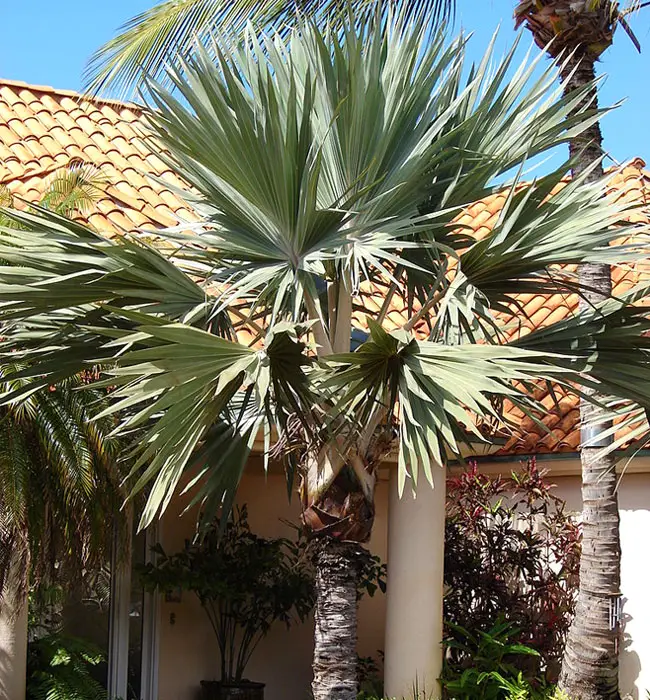
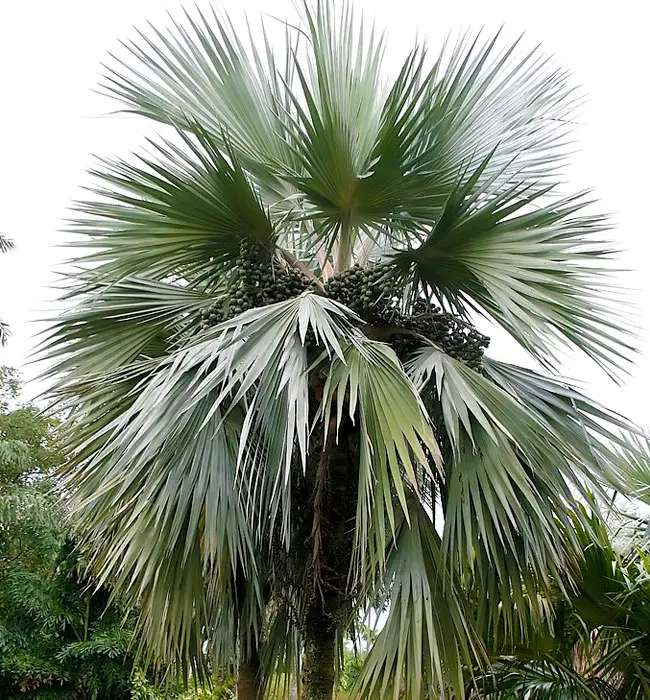
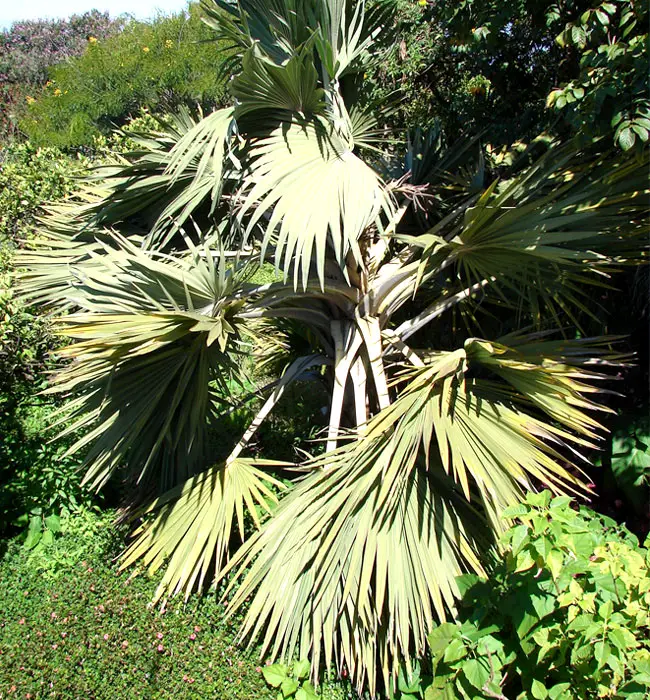

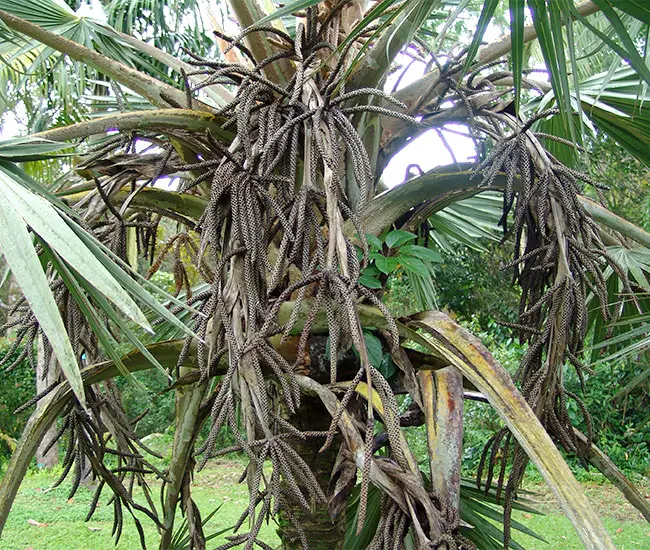
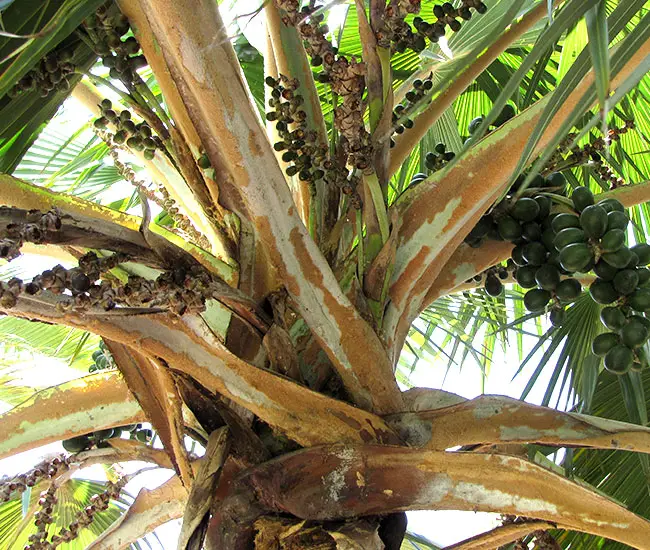
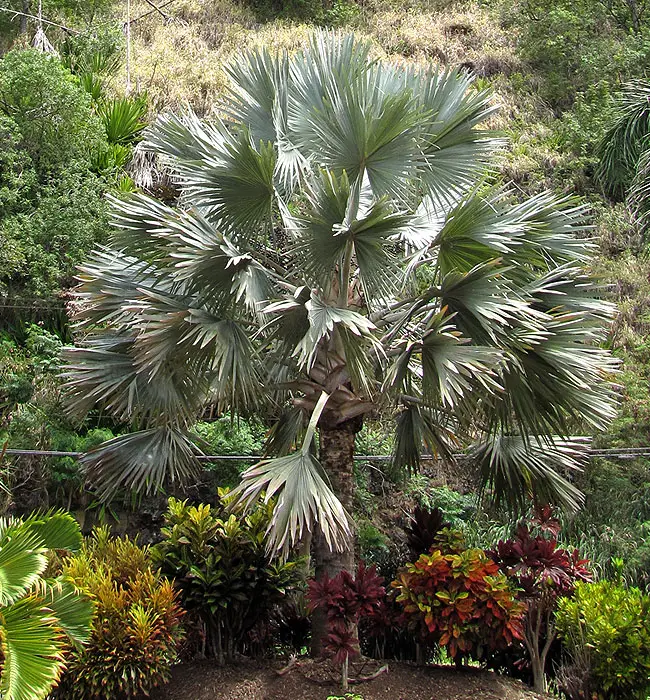
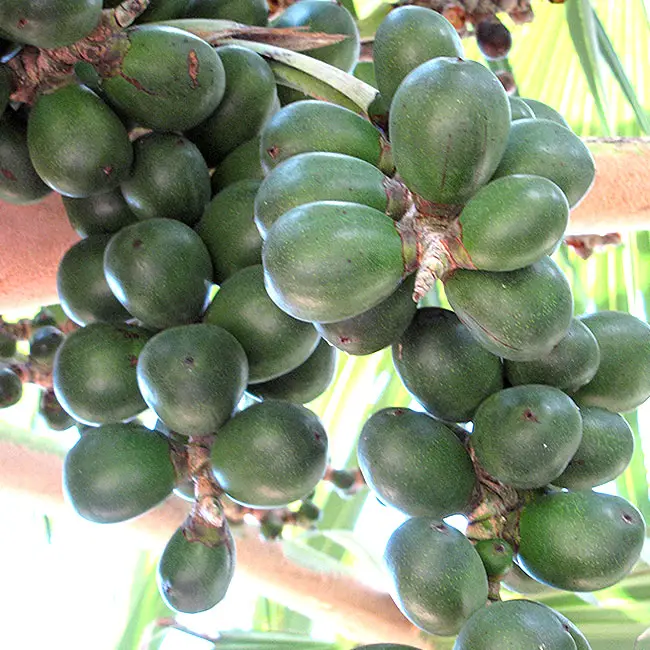
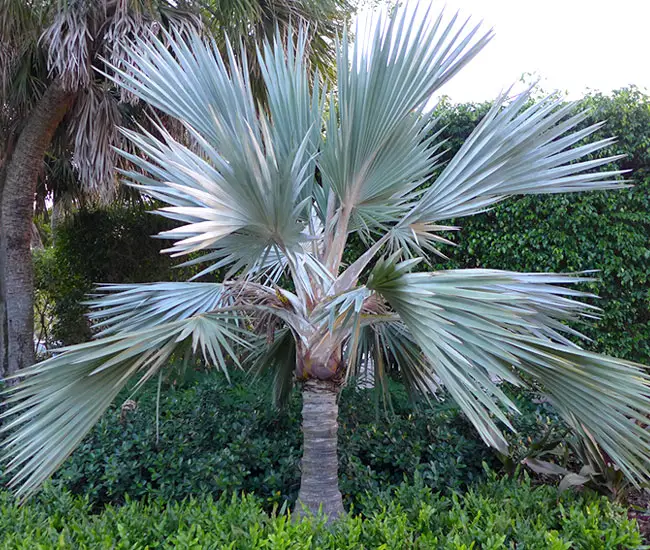
More information can be found on EDIS site.

Comments are closed.